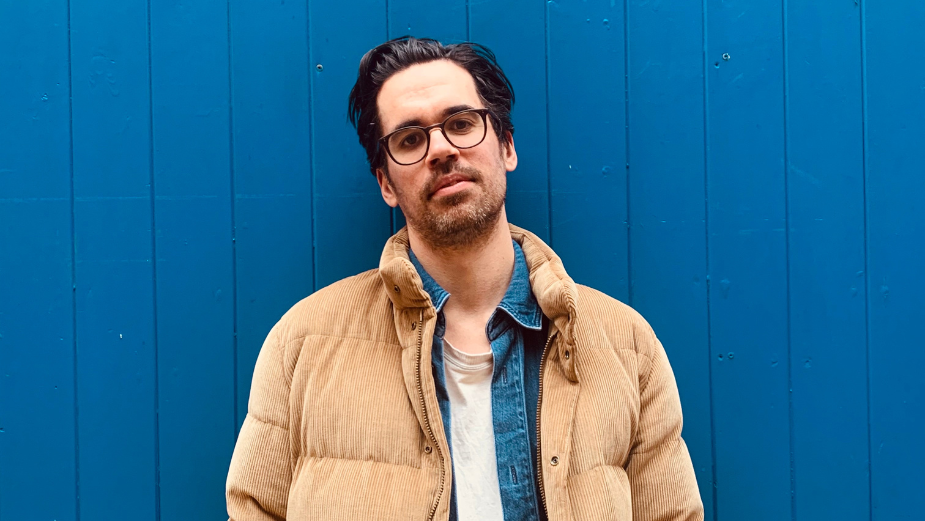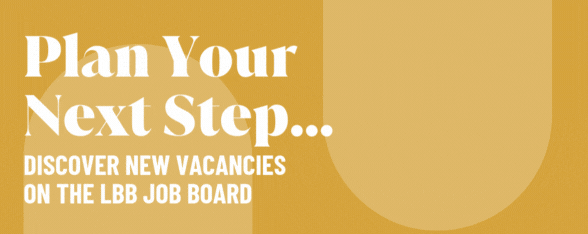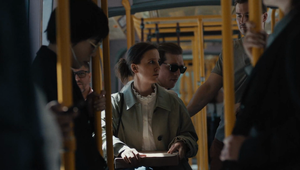
Finely Sliced: Taking Inspiration from the Arts with Jamie Hodgson

Jamie began his career in 2014 as an assistant editor at Work. Travelling widely and bolstered by his background in tech and computing Jamie moved swiftly to senior cutting assistant completing campaigns alongside Work’s roster of editors.
Promoted to editor in 2020, Jamie has since split his time between commercials and music videos - working for brands such as Adidas; Playstation; CP Company and YouTube, and artists including Stormzy; Celeste and Obongjayar.
LBB> The first cut is the deepest: how do you like to start an editing project?
Jamie> I’ll read through the directors treatment to start to spark off some ideas. Sometimes they’ll be a call with the director, but generally I prefer the space to assemble a first cut purely on the basis of what’s been shot, without being clouded about what happened on set. Then I’ll start working with the director.
I like to take my time when selecting, taking note of how different shots make me feel. You only get that first impression once! And I’ll often select music, to see how the footage plays with different tracks.
LBB> Non-editors often think of editing just in technical terms but it’s integral to the emotion and mood of a film. How did you develop that side of your craft?
Jamie>I watch a lot of films. I’m fascinated by the thought processes & techniques taken by different editors, so I read a lot of books written by editors as well as podcasts. Also, coming through the ranks as an assistant editor, you pick up a lot from the main editor on different projects.
I think it’s also important not to be too boxed into the film medium. I take a lot of inspiration from the arts.
LBB> How important is an understanding of story and the mechanics of story?
Jamie> It’s absolutely vital. In essence, editing is about finding the right language to best tell a story. Without an understanding of the narrative, you’re basically lost.
Within that the possibilities are endless- which character perspectives to draw on; when to compress or extend time; what to reveal to the audience, and when. But it’s all based on the story you’re trying to tell.
LBB> Rhythm and a sense of musicality seem to be intrinsic to good editing (even when it’s a film without actual music) – how do you think about the rhythm side of editing, how do you feel out the beats of a scene or a spot? And do you like to cut to music?
Jamie> I think each film has its own internal rhythm based on different factors - actor performances; direction; camera work and so on. As an editor it’s about having a ‘feel’ for this as you build the scene, and a sense of musicality definitely helps with this. There’s a great Walter Murch quote where he talks about knowing a scene is done when he can no longer see himself (and his edit decisions) in the scene, just the story. I think there’s a lot of truth in that.
I’ve worked on a lot of music videos over the years which definitely helped me develop the musicality in my editing. There really is no replacement for time spent in the cutting room - as you progress you start to create more interesting rhythms (rather than just cutting on the beat), and gain the confidence to allow certain shots to breathe. I’ve always enjoyed how open the edit briefs can be in this art form too - it's a great space for creativity and experimentation.
LBB> Tell us about a recent editing project that involved some interesting creative challenges.
Jamie> Mel Made Me Do It by Stormzy - with the video clocking in at 11 minutes, the main challenge was to make it flow and come together as a cohesive piece of work. Such was the multitude of cameos, it became a question of how you could integrate them into the narrative framework in an organic way.
Much of it came down to the greatness scene which pays tribute to Black British artists. The breakthrough came when we looped the instrumental for this section to give the visuals the space they needed.
LBB> How important is your relationship with the director and how do you approach difficult conversations when there is a creative difference of opinion?
Jamie> Every director/editor relationship is different, but it is so important - a lot of the film is crafted in the edit suite. I find that more collaborative relationships are more rewarding and ultimately more successful.
You have to be able to articulate your opinion in a clear manner - as editor you’re the first audience so it’s part of the job. It needn’t be awkward if you approach it in the right way. At the same time, you need to appreciate where the director is coming from and be able to work within that framework. As you work more with a director you gain their trust and an understanding of what they want, developing a kind of short-hand.
LBB> What’s harder to cut around – too much material or not enough? (And why?)
Jamie> I always think you can never have too much good material, just trust your process and try not to panic if you’re drowning in footage. It can cause a few issues on jobs with tighter timescales, but you just need to put in the hours!
LBB> Which commercial projects are you proudest of and why?
Jamie> ‘I’m Voting Labour’, which was a campaign film for the 2019 general election. It is not too often you work on commercials you really believe in. Also, it was right at the start of my editing career, so it gave me a lot of belief that I could cope with high pressure jobs. We were still getting rushed on the day of the deadline and finally locked the edit in the early hours.
‘The Dance’, which was a film for the Motor Neurone Disease Association. It was a very personal film for the director, showing the devastating effects of the disease in the form of dance. Obviously it’s a fantastic cause, and was a very special project to be a part of.
LBB> There are so many different platforms for film content now, and even in advertising something can last anything from a few seconds to a couple of hours. As an editor, are you seeing a change in the kind of projects you’re getting from brands and agencies?
Jamie> Yes and no. There’s certainly more content, whether it’s different length spots for online, or different crops for social media. But it’s usually in addition to the main film, so not too much of a change there.
LBB> Who are your editing heroes and why? What films or spots epitomise good editing for you?
Jamie> Walter Murch for being the most eloquent in explaining his process - his books on filmmaking were my film school. Also Thelma Shoonmaker, Joe Walker….the list goes on.
Recently I’ve been impressed by the editing on ‘Aftersun’ and ‘Everything Everywhere All At Once’, but for very different reasons. The scope of what can be done in the edit is vast, but ultimately it’s about serving the film as a whole.















